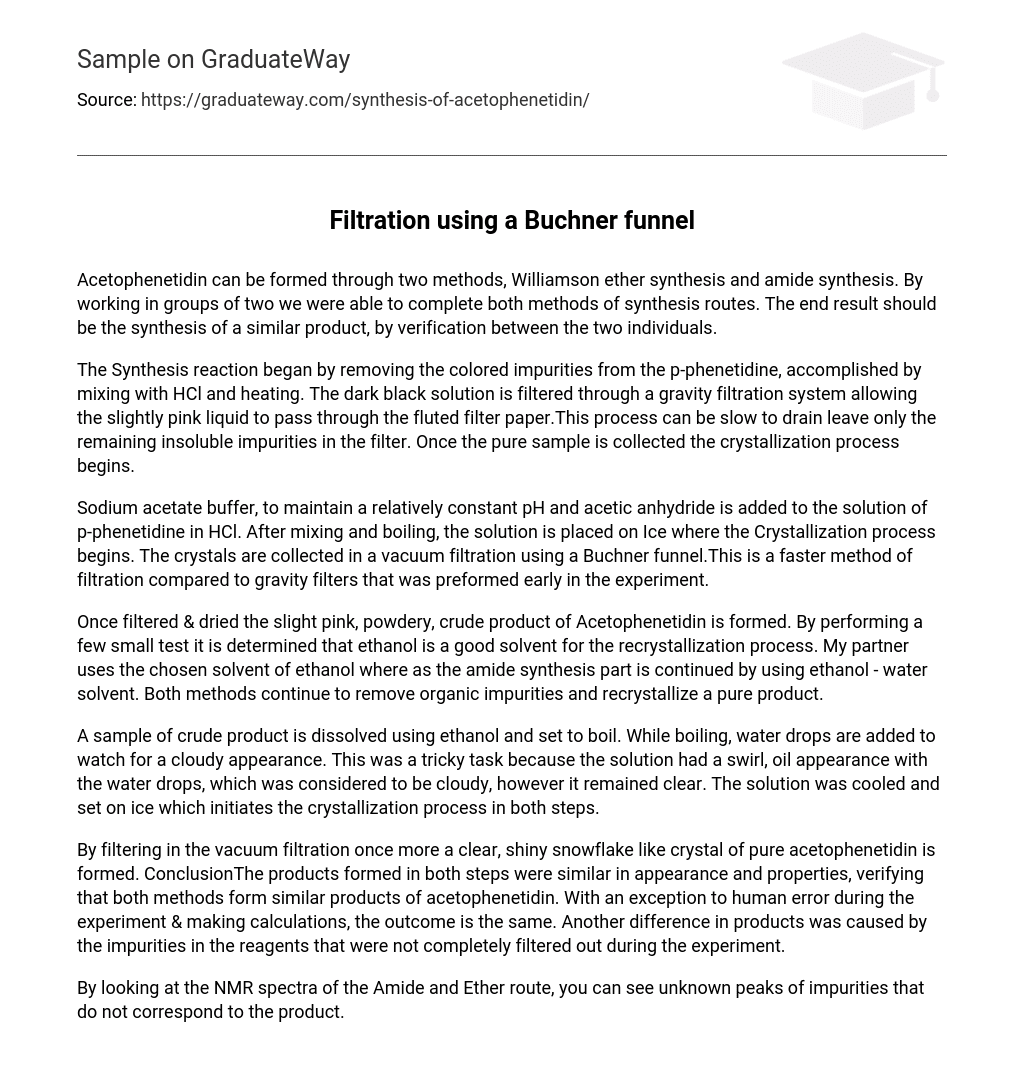Acetophenetidin can be synthesized using two methods: Williamson ether synthesis and amide synthesis. Working in pairs, we were able to successfully complete both synthesis routes. The ultimate goal is to verify that the two individuals’ methods yield a similar product.
Initially, the Synthesis reaction started by eliminating the colored impurities from the p-phenetidine. This was achieved by combining it with HCl and subjecting it to heat. The resulting dark black solution is then filtered using a gravity filtration system, where the slightly pink liquid passes through the ridged filter paper. This filtration process may take time as it drains, leaving behind only the insoluble impurities on the filter. Once the pure sample is collected, the process of crystallization is initiated.
The solution containing p-phenetidine in HCl is treated with sodium acetate buffer to maintain a constant pH. Acetic anhydride is also added to the solution. After mixing and boiling, the resulting solution is then cooled on ice to initiate the crystallization process. The crystals are then collected using a Buchner funnel and vacuum filtration. This method is faster than the gravity filters used earlier in the experiment.
After being filtered and dried, Acetophenetidin is transformed into a slightly pink, powdery, crude product. Through conducting some small tests, it is found that ethanol is an effective solvent for the recrystallization procedure. While my partner utilizes ethanol as the chosen solvent, ethanol-water solvent is employed for the amide synthesis part. Both methods are employed to eliminate organic impurities and produce a pure product through recrystallization.
A crude product sample is dissolved in ethanol and heated to boiling point. During the boiling process, water droplets are introduced in order to observe any cloudiness. The cloudy appearance was expected due to the presence of a swirl, oil-like appearance when water was added, but the solution remained clear. The solution is then cooled and placed on ice to facilitate crystallization in both steps.
When the vacuum filtration is performed again, a pure acetophenetidin crystal that resembles a clear and shiny snowflake is obtained. The similarity in appearance and properties of the products from both steps confirms that both methods produce acetophenetidin. The only potential variation in the outcome could be due to human error or miscalculations during the experiment. Additionally, impurities present in the reagents that were not completely filtered out also led to differences in the products.
By examining the NMR spectra of the Amide and Ether pathway, one can observe unidentified peaks of contaminants that do not match the intended product.





